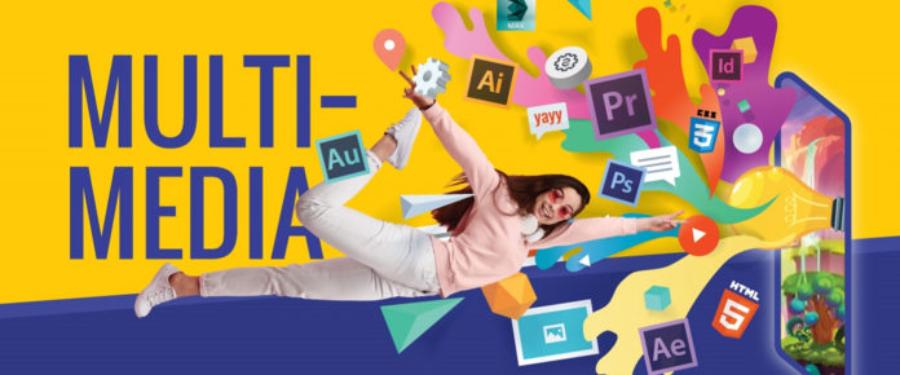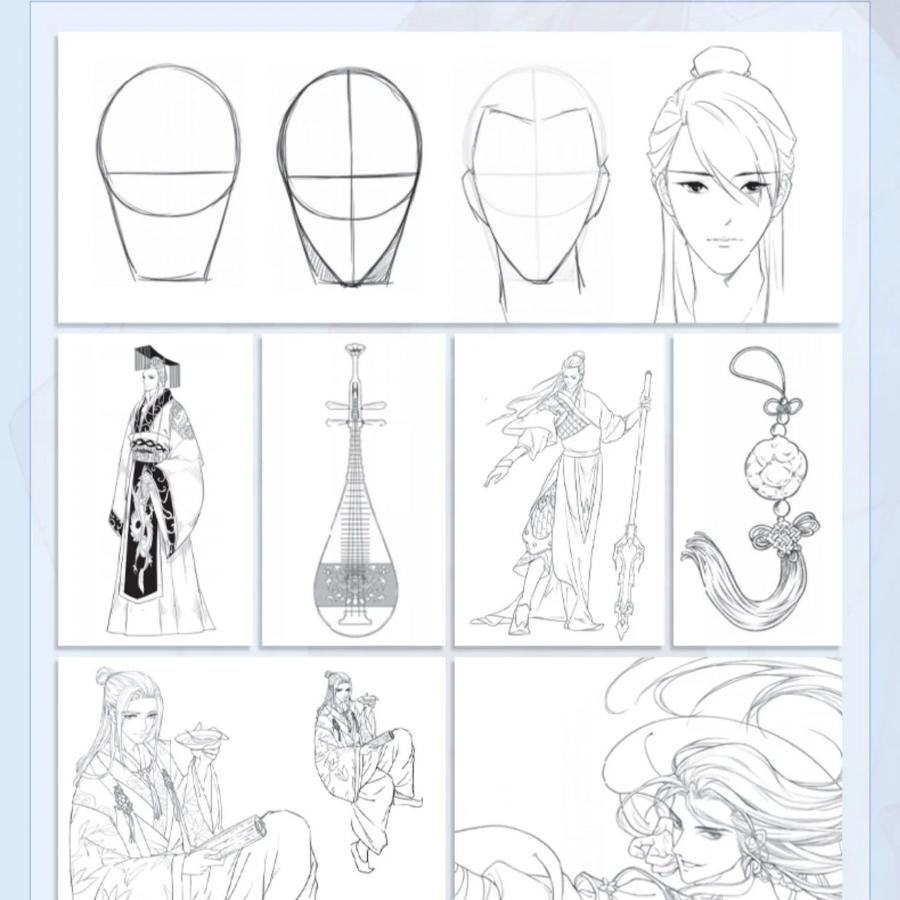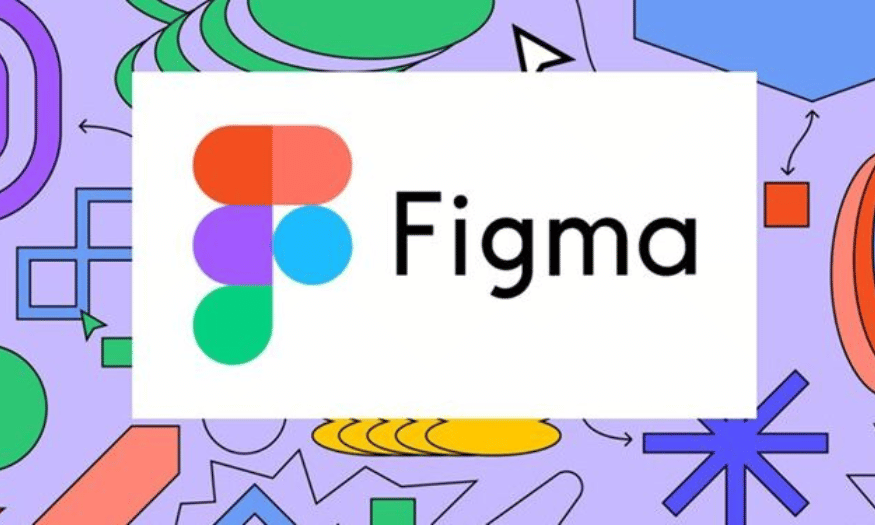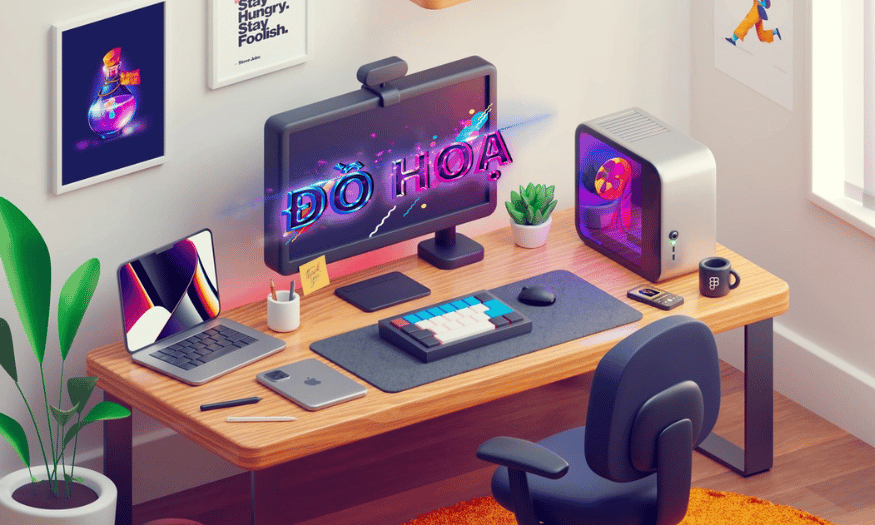Best Selling Products
Why 2025 is the year of Multimedia Design
Nội dung
- 1. Overview of Multimedia Design
- 1.1. History and development of Multimedia Design
- 1.2. The importance of Multimedia Design in modern life
- 2. Prominent trends driving the breakthrough of Multimedia Design industry in 2025
- 2.1. Virtual reality and augmented reality technology is developing strongly.
- 2.2. Artificial intelligence supports multimedia content creation
- 2.3. The explosion of digital content and multi-channel communication
- 3. Career and development opportunities in Multimedia Design
- 3.1. High recruitment demand
- 3.2. Attractive income and clear promotion
- 3.3. Diverse and attractive career opportunities
- 4. Skills needed to succeed in Multimedia Design in 2025
- 4.1. Proficiency in multimedia design software
- 4.2. Diversity in multimedia design software
- 4.3. Integrating software into workflow
- 4.4. Creative thinking and problem solving ability
- 4.5. Integrating innovation with new technology
- 4.6. Creativity in multimedia design helps enhance brand value
- 4.7. Communication and teamwork skills
- 4.8. Ability to learn and adapt to new technology
- 5. Conclusion
Discover why 2025 will be a boom year for Multimedia Design. The trends, career opportunities, and technological developments that will completely change the industry.

The year 2025 marks an important turning point for the Multimedia Design industry. The remarkable development of technology and diverse needs from the market have made this field a potential industry, attracting the attention of young people and investors. In this article, Sadesign will help you understand why 2025 is considered the year of Multimedia Design with detailed analysis and the latest updates.
1. Overview of Multimedia Design
Multimedia Design is a field that combines many creative and technological elements to create diverse media products such as videos, images, sounds, animations and interactive experiences. In the digital age, the role of Multimedia Design is increasingly affirmed when businesses and individuals need to convey messages effectively on many platforms.
.jpg)
Multimedia Design not only requires professional knowledge of design but also requires the ability to apply new technologies such as virtual reality (VR), augmented reality (AR), artificial intelligence (AI), and modern design software. This makes the industry increasingly dynamic and constantly changing, creating development opportunities for those working in this field.
1.1. History and development of Multimedia Design
Initially, Multimedia Design was just a combination of traditional art forms and computer technology. Over time, the industry has expanded dramatically, from creating simple websites to developing complex interactive products, with increasingly enhanced user experiences. The explosion of the Internet and mobile devices is the driving force that makes Multimedia Design an important profession in the 21st century.
1.2. The importance of Multimedia Design in modern life
Multimedia Design plays a key role in communicating and promoting brands, helping businesses connect effectively with customers. Multimedia products are not only aesthetically pleasing but also enhance user experience, thereby creating sustainable brand value. Today, Multimedia Design is also associated with education, entertainment, and even healthcare, expanding its scope of influence and application in many fields.
2. Prominent trends driving the breakthrough of Multimedia Design industry in 2025
2.1. Virtual reality and augmented reality technology is developing strongly.
By 2025, virtual reality (VR) and augmented reality (AR) will become indispensable tools in the Multimedia Design industry. Designers will use this technology to create more realistic, engaging, and interactive experiences. This opens up new opportunities for the industry in education, tourism, gaming, advertising, and many other industries.
The integration of VR and AR has helped Multimedia Design thrive, meeting the growing demand of users for multi-sensory experiences. With the ability to create immersive virtual environments, the industry not only attracts customers but also creates unique innovative products.
2.2. Artificial intelligence supports multimedia content creation
Applying artificial intelligence (AI) in Multimedia Design helps optimize the creative process, from image editing, automatic video creation to developing personalized experiences. AI contributes to improving work efficiency and allows designers to focus on more innovative ideas.
By 2025, the application of AI in Multimedia Design will no longer be a trend but a standard in the industry. Intelligent support tools help shorten production time, increase product quality and diversify the form of transmission.
2.3. The explosion of digital content and multi-channel communication
With the continuous development of the Internet, social networks and digital platforms, Multimedia Design has become an essential element in building and developing a brand. Digital content is not simply images or videos, but a combination of different media to create vivid, multi-dimensional experiences.
The diversification of communication channels creates favorable conditions for Multimedia Design to promote its strengths, from designing user interfaces (UI), user experiences (UX) to creating attractive marketing campaigns. In 2025, multimedia content will continue to be the mainstream trend, promoting the development of the industry.
3. Career and development opportunities in Multimedia Design
With the constant development of technology and the need to convey information vividly, career opportunities in the industry are increasingly open. Below will provide information to help you better understand the potential and development path in the Multimedia Design industry.
.jpg)
3.1. High recruitment demand
The Multimedia Design industry is currently witnessing a boom in recruitment demand. Businesses from various fields such as advertising, media, education, entertainment and technology are very interested in developing high-quality multimedia content. This has led to a large number of job positions being opened for professionals in the industry.
Fields in need of Multimedia Design human resources
Not limited to the media industry, Multimedia Design is also present in many fields such as game development, video production, website design, online training, and e-commerce. These jobs require skills that combine art and technology to help convey messages in the most effective way.
The impact of technology on recruitment needs
The development of new technologies such as virtual reality (VR), augmented reality (AR), and artificial intelligence (AI) has expanded the scope of application of Multimedia Design. As a result, the demand for skilled professionals in this field is constantly increasing, leading to attractive salaries and benefits for employees.
3.2. Attractive income and clear promotion
With high professional skills and the ability to apply modern technology, human resources in the Multimedia Design industry enjoy good income and clear promotion opportunities. In 2025, when new technologies are widely applied, the career value in this field will increase, creating development motivation for professionals.
3.3. Diverse and attractive career opportunities
There are many job positions in the Multimedia Design industry, catering to the diverse interests and skills of professionals. Here are some typical roles you can choose from.
Multimedia Graphic Designer
This is the most common position in the Multimedia Design industry. The main task is to create graphics, videos, animations, or interactive content for communication and marketing purposes. Multimedia graphic designers need to have creative skills, proficiency in design software, and understanding of market trends.
Digital content producer
Multimedia Design also opens up many opportunities for those who love to create digital content such as video clips, podcasts, or online television shows. Digital content producers need the ability to edit, write scripts, and coordinate production effectively to attract audiences.
User Experience Development Specialist (UX/UI)
A growing area within Multimedia Design is user experience and user interface design. This role requires a deep understanding of user behavior as well as the ability to design beautiful, user-friendly, and usable interfaces across a variety of digital platforms.
4. Skills needed to succeed in Multimedia Design in 2025
The multimedia design industry is growing rapidly, requiring professionals to not only have professional knowledge but also be equipped with many important skills to stand firm and succeed in the competitive environment of 2025. This article will help you understand the essential skills in multimedia design, from software proficiency to creative thinking, communication skills and the ability to adapt to modern technology.
.jpg)
4.1. Proficiency in multimedia design software
To advance in the multimedia design industry, mastering specialized software is a prerequisite. Tools such as Adobe Photoshop, Illustrator, After Effects, Premiere Pro and 3D software such as Blender or Maya are indispensable “weapons” for multimedia designers. Proficiency in multimedia design software helps improve work efficiency and product quality.
Proficiency in multimedia design software not only helps you create beautiful products but also professional ones, meeting the diverse requirements of customers and the market. In addition to popular software, multimedia designers also need to learn more about new support tools to enhance creativity and optimize workflow.
4.2. Diversity in multimedia design software
Multimedia design software is increasingly diverse and constantly updated with new versions. Keeping up with updates and new features will help multimedia designers optimize efficiency, from image editing, video editing, graphic design to animation. From there, the created product is highly aesthetic and brings a good experience to the viewer.
4.3. Integrating software into workflow
In the modern multimedia design environment, combining multiple software in the same project is very common. Multimedia designers need to know how to integrate and synchronize data between different software to improve efficiency and minimize errors.
4.4. Creative thinking and problem solving ability
Multimedia design is not only a technique but also an art, requiring outstanding creative thinking. Multimedia designers must know how to turn ideas into specific, unique products that are suitable for project requirements. Creativity in multimedia design is the ability to combine colors, images, sounds and movements in a harmonious way to create attractive products.
Problem-solving skills also play an important role in multimedia design. During the course of work, many situations arise such as technical errors, change requests from clients or time constraints that need to be handled quickly and effectively. Creative thinking in multimedia design helps professionals find alternative solutions that are suitable for each situation.
4.5. Integrating innovation with new technology
The rapid development of technology brings many creative support tools in multimedia design. Designers need to know how to apply new technologies such as virtual reality (VR), augmented reality (AR) or artificial intelligence (AI) to create high-value multimedia products that keep up with market trends.
4.6. Creativity in multimedia design helps enhance brand value
Creative multimedia design products not only attract customers but also differentiate the brand. Creativity in multimedia design is a decisive factor in building and developing an effective brand image.
.jpg)
4.7. Communication and teamwork skills
Working in the multimedia design industry requires effective communication and teamwork skills. Most multimedia design projects are the result of collaboration between many members, from designers, editors, programmers to project managers. Communication skills help multimedia designers communicate ideas clearly, receive feedback, and work effectively with colleagues.
Communication in multimedia design also helps to reduce misunderstandings and errors during project implementation. This skill also helps multimedia designers negotiate with clients, explain products, and persuade stakeholders.
Teamwork in Multimedia Design
Teamwork and coordination between departments are the keys to success in multimedia design. Sharing ideas, supporting each other when faced with difficulties, and solving problems together help multimedia design projects to be completed more quickly and efficiently.
Communication skills help build professional relationships
In addition to teamwork, communication skills in the multimedia design industry also play an important role in building a sustainable professional network. Effective communication will help multimedia designers receive many opportunities for cooperation and development in the future.
4.8. Ability to learn and adapt to new technology
The ever-evolving world of technology means that the multimedia design industry is constantly changing and requires constant updating. Multimedia designers need to maintain the ability to continuously learn to absorb new trends, tools, and techniques. The ability to quickly adapt to new technology is one of the decisive factors that helps multimedia designers maintain their position and improve their competitiveness.
Continuous training, attending courses, workshops and researching new technologies are ways for multimedia designers to maintain sustainable development in the profession.
Adapting new technology helps increase work efficiency
Applying new technologies in multimedia design helps optimize workflows, shorten project completion times, and create higher quality products. The ability to quickly learn and apply these technologies is a great advantage for multimedia designers in a dynamic work environment.
Challenges and opportunities when adapting to new technology
The process of adapting to new technology in the multimedia design industry is inevitably difficult, such as requiring time to get used to, investment costs for learning or updating software. However, the opportunities that technology brings are always greater than the challenges, helping multimedia designers improve their self-worth and expand their creative scope.
5. Conclusion
The year 2025 is truly a golden time for the Multimedia Design industry to develop strongly and make a breakthrough. With the remarkable progress of technology and the increasingly diverse needs of the market, Multimedia Design is not only a creative field but also a promising career and income. The combination of skills is the key to help people in the industry succeed.












































